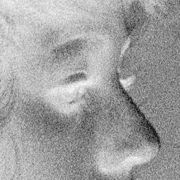Metering and Focusing, Viewfinder Vs Screen, and also useful links and info.

In optics, particularly as it relates to film and photography, the depth of field (DOF)
is the portion of a scene that appears sharp in the image. Although a lens can precisely
focus at only one distance, the decrease in sharpness is gradual on either side of the
focused distance, so that within the DOF, the unsharpness is
imperceptible under normal viewing conditions.
Most video and digital still cameras can adjust for color temperature by zooming
into a white or neutral colored object and setting the manual "white balance"
(telling the camera that "this object is white"); the camera then shows true white
as white and adjusts all the other colors accordingly. White-balancing is necessary
especially when indoors under fluorescent lighting and when moving the camera
from one lighting situation to another. Most cameras also have an automatic white
balance function that attempts to determine the color of the light and correct accordingly.
While these settings were once unreliable, they are much improved in today's digital
cameras, and will produce the "correct" white balance in a wide variety
of lighting situations.

ISO setting or Film speed is the measure of a photographic film's sensitivity to light,
determined
by sensitometry and measured on various numerical scales, the most
recent being
the ISO system. Relatively insensitive film, with a correspondingly
lower speed
index requires more exposure to light to produce the same
image density as a
more sensitive film, and is thus commonly termed a slow film.
Highly sensitive films are correspondingly termed fast films.
 Grainy high speed B/W film negative
Grainy high speed B/W film negativeIn digital camera systems, an arbitrary relationship between exposure and
sensor data values can be achieved by setting the signal gain of the sensor.
The relationship between the sensor data values and the lightness of the
finished image is also arbitrary, depending on the parameters chosen for the
interpretation of the sensor data into an image color space such as sRGB.

See also = These notes from other Terms
Examples of metering modes Cameras generally allow the user to select between spot,
center-weighted average, or multi-zone metering modes.
Various metering modes are
provided to allow the user to select the most appropriate one for use
in a variety of lighting conditions.

Picture no 4

Parallax is an apparent displacement or difference of orientation of an object
viewed along two different lines of sight, and is measured by the angle or
semi-angle of inclination between those two lines.


These are some of my favourite info sites http://www.yourtv.com.auand also
http://www.dvorak.org/blog/ I'll post more in the future.

http://twitter.com/jimbell and also http://twitter.com/U3ADigitalPhoto
Chapter 4 and 5 of Digital Photography "Digital Camera Techniques" and
"Capturing Digital Images" are well worth the read

A blog (a contraction of the term weblog) is a type of website, usually maintained
by an individual with regular entries of commentary, descriptions of events,
or other material such as graphics or video.
Entries are commonly displayed in reverse-chronological order.
"Blog" can also be used as a verb, meaning to maintain or add content to a blog.

An interesting addition for your digital camera screen.
"Pop-Up Shades are LCD screen protective covers, which also double as glare guards."


These pop-up shade/covers are available at http://delkin.com/products/popupshades/index.html
No comments:
Post a Comment